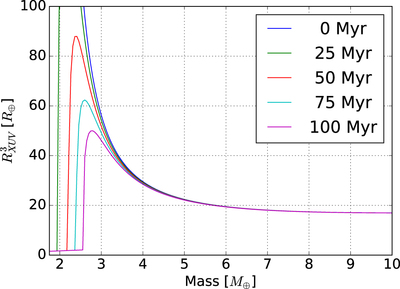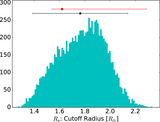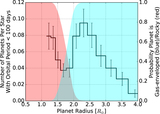Image Details

Caption: Figure 4.
Value of ﹩{R}_{\mathrm{XUV}}^{3}﹩ at times τ = 0, 25, 50, 75, and 100 Myr (shown by the blue, green, red, cyan, and magenta curves, respectively) for planets between 1.75 M⊕ and 10 M⊕ around a Sun-like star at 0.1 au. The model parameters were set to T = 880 K, FXUV = 55 W m−2, α = 0.03, η = 0.1, pXUV = 5 Pa, and Rg = 4157 J kg−1 K−1. The low-mass planets have large ﹩{R}_{\mathrm{XUV}}^{3}﹩ values that cause rapid loss. By ∼6 M⊕, ﹩{R}_{\mathrm{XUV}}^{3}﹩ has become roughly constant with mass. The approximately flat line at low masses (below ∼2.5 M⊕ for the magenta curve) indicates that, for a given τ, the atmosphere has been entirely lost and ﹩{R}_{\mathrm{XUV}}^{3}﹩ is at the surface of the planet.
Copyright and Terms & Conditions
© 2017. The American Astronomical Society. All rights reserved.







